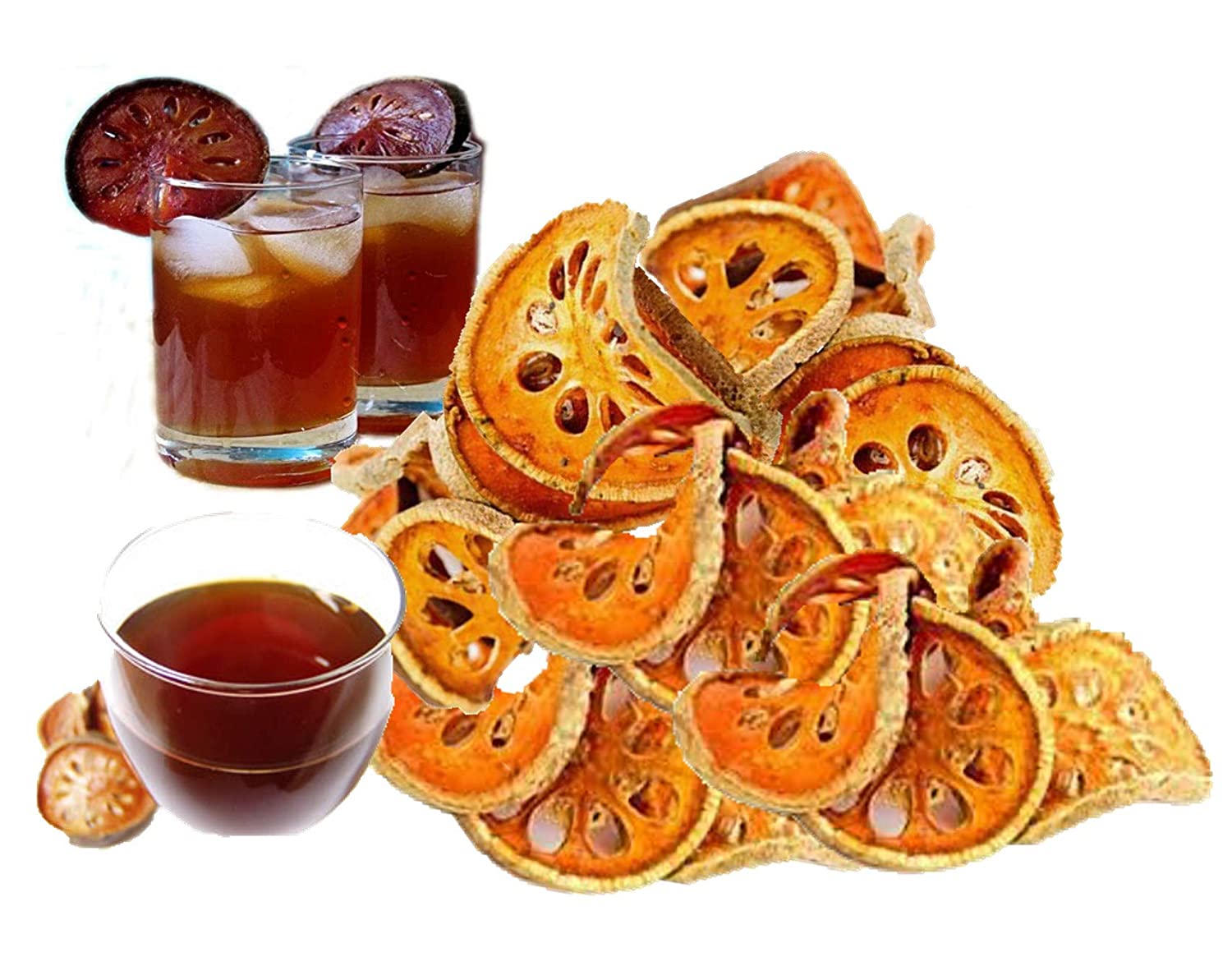8 health and nutritional benefits of Bael Fruit/ Wood Apple
English Names: Stone Apple or Wood Apple
Indian Name: Bael Fruit
origin, DISTRIBUTION AND COMPOSITION
The fruit is woody and smooth, 5 to 15 cm in diameter. It has numerous seeds which are densely covered with fibrous hair and are embedded in a thick aromatic pulp. The flesh is eaten fresh or dried.
An analysis of the

bael fruit shows that it consists of moisture 61.5 per cent, protein 1.8 per cent, fat 0.3 per cent, minerals 1.7 per cent, fibre 2.9 per cent and carbohydrates 31.8 per cent per 100 grams of edible portion.
Its mineral and vitamin contents include calcium, phosphorus, iron, carotene, thiamine, riboflavin, niacin and vitamin C.
You can take the bael fruit in the form of powder, tea or in a form of capsule.
Healing properties of bael fruit
The bael tree is one of the most useful medicinal plants of India. All parts of this tree-stem, bark, root, leaves and fruit have medicinal properties and have been used as medicine for a long time.
The fruit's medicinal value is very high when it just begins to ripen. The fruit is aromatic, cooling and laxative. The unripe or half-ripe fruit is good for digestion. It is useful in preventing or curing scurvy. It also strengthens the stomach and promotes its action.
CONSTIPATION
Ripe fruit is regarded as best of all laxatives. It cleans and tones up the intestines. Its regular use for 2 or 3 months throws out even the old accumulated faecal matter. For best results, it should be taken in the form of juice, which is prepared from the pulp of the ripe fruit.
After breaking the shell, the seeds are removed, with the contents, spooned out and sieved. Milk and sugar are added to make it more palatable. The pulp of the ripe fruit can also be taken without the addition of milk or sugar.
diarrhoea and dysentery
The unripe or half-ripe fruit is perhaps the most effective remedy for chronic diarrhoea and dysentery where there is no fever. Best results are obtained by the use of dried bael or its powder.
The bad fruit, when it is still green, is sliced and dried in the sun. The dried bael slices are powdered and preserved in airtight bottles. The unripe fruit can also be baked and used with jaggery or brown sugar.
peptic ulcer
An infusion of bael leaves is regarded as an effective remedy for peptic ulcer. The leaves are soaked overnight in water. This water is strained and taken in the morning. The pain and discomfort are relieved when this treatment is continued for a few weeks.
Bael leaves are rich in tannin which reduces inflammation and help in the healing of ulcers. Bael fruit taken in the form of a beverage also has great healing properties on account of its mucilage content. This forms a coating on the stomach mucosa and thus helps heal ulcers.
Diabetes
When the fruit powder is combined with equal parts of turmeric and neem, it helps in controlling the blood sugar levels and is helpful in the management of adult onset diabetes.
Scurvy
Due to its high vitamin C content, its also good very useful in the prevention of scurvy.
Best way to consume it is in the form of powder mix with water, tea or via capsules.
ear problems
The root of this tree is used as a home remedy for curing ear problems.
The antiseptic properties of neem combined with the astringent extract of bael root helps in curing infection, chronic inflammation and discharge.
respiratory disorders
A medicated oil prepared from Bael leaves gives relief from recurrent colds and respiratory affections. The juice extracted from bael leaves is mixed with equal quantity of sesame oil and heated thoroughly. A few seeds of black pepper and half a teaspoon of black cumin are added to the heated oil.
It is then removed from the fire and stored for use when necessary. A teaspoon of this oil should be massaged into the scalp before a head bath. Its regular use builds up resistance to colds and coughs.
OBESITY AND oedema
It is mildly diuretic, so it can help in treating oedema and obesity.
Taking 1 tsp. of the powdered herb with warm water, mixed with 1 tsp. of raw honey first thing in the morning on an empty stomach can help to reduce body fat.
precautions
The ripe fruit should not be taken regularly at a stretch. When used without a break, it produces atony of the intestines or lack of normal elasticity and consequent flatulence in the abdomen.
The bael fruit should also not be taken in excess at a time, as excessive intake may produce a sensation of heaviness in the stomach.
The juice made of bael must not be very thin. It should be viscous so that it can be thoroughly chewed. It may produce heaviness in the stomach, if taken hurriedly.



